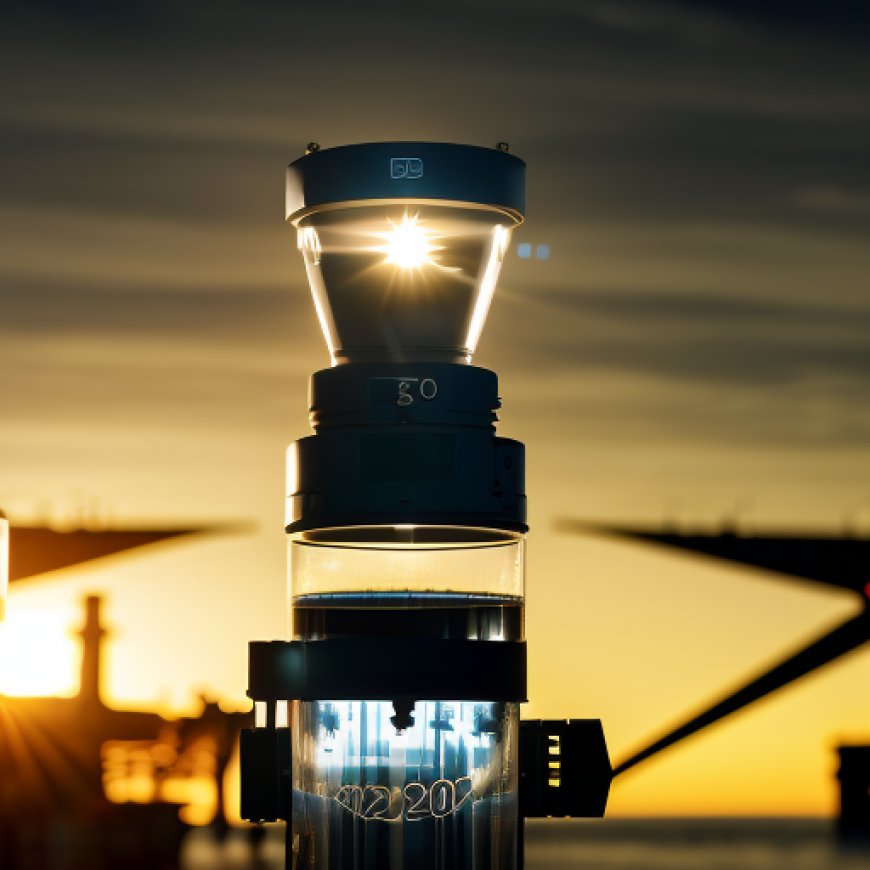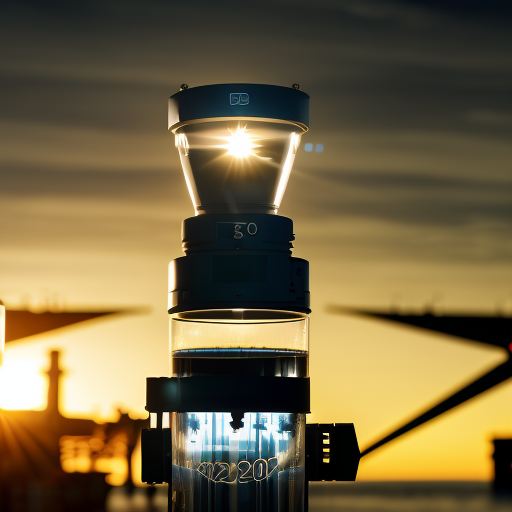H2O Innovation Gains Exclusive Distribution Rights for Advanced ROTEC Desalination Technology
H2O Innovation Gains Exclusive Distribution Rights for Advanced ROTEC Desalination Technology Yahoo Finance


Cooperation Framework Agreement for ROTEC’s Desalination Technology in North American Biofuels Market
QUEBEC CITY, April 15, 2024–(BUSINESS WIRE)–H2O Innovation Inc. (“H2O Innovation” or the “Corporation”) is pleased to announce the conclusion of a cooperation framework agreement granting the Corporation the exclusive right to sell ROTEC (“ROTEC”) proprietary desalination Flow Reversal (FR) technology in the North American biofuels market.
ROTEC, a business unit of the WFI Group founded in 2009, has developed FR technology that offers cost effectiveness and various key advantages. This technology can be implemented in new and existing reverse osmosis (RO) plants, allowing for periodic switching of flow direction in RO pressure vessel arrays. This increases product water capacity while maintaining the same amount of feed water, which can also be reduced. Additionally, ROTEC’s patented approach reduces membrane fouling and scaling issues, resulting in a reduced frequency of required cleaning-in-place procedures. This advancement contributes to time efficiency, environmental effectiveness, and sustainability.
“This is an amazing opportunity for us to provide this technology to North America and add it to our innovation portfolio. The Flow Reversal technology will be a game changer for the biofuels industry, one of our core markets,” stated Frédéric Dugré, President, Chief Executive Officer and co-Founder of H2O Innovation.
“Each market has its own set of challenges and specifications. H2O Innovation has a great deal of experience in many different markets, including a particularly strong reputation for quality solutions in the biofuels space. We are happy to work with them to bring additional water resiliency and efficiency options to that space and beyond,” stated Bruce Alderman, Chief Executive Officer of ROTEC USA.
About H2O Innovation
H2O Innovation is a complete water solutions company focused on providing best-in-class technologies and services to its customers. The Corporation’s activities rely on three pillars:
- Water Technologies & Services (WTS): Applies membrane technologies and engineering expertise to deliver equipment and services to municipal and industrial water, wastewater, and water reuse customers.
- Specialty Products (SP): Manufactures and supplies a complete line of specialty chemicals, consumables, and engineered products for the global water treatment industry.
- Operation & Maintenance (O&M): Provides contract operations and associated services for water and wastewater treatment systems.
Through innovation, H2O Innovation strives to simplify water.
Source: H2O Innovation Inc. www.h2oinnovation.com
View source version on businesswire.com: https://www.businesswire.com/news/home/20240415900463/en/
Contacts
- Communications Department
- +1 418-688-0170
- communications@h2oinnovation.com
SDGs, Targets, and Indicators
-
SDG 6: Clean Water and Sanitation
- Target 6.3: By 2030, improve water quality by reducing pollution, eliminating dumping and minimizing release of hazardous chemicals and materials.
- Indicator 6.3.2: Proportion of bodies of water with good ambient water quality.
-
SDG 9: Industry, Innovation, and Infrastructure
- Target 9.4: By 2030, upgrade infrastructure and retrofit industries to make them sustainable, with increased resource-use efficiency and greater adoption of clean and environmentally sound technologies and industrial processes.
- Indicator 9.4.1: CO2 emission per unit of value added.
-
SDG 12: Responsible Consumption and Production
- Target 12.4: By 2020, achieve the environmentally sound management of chemicals and all wastes throughout their life cycle, in accordance with agreed international frameworks, and significantly reduce their release to air, water, and soil in order to minimize their adverse impacts on human health and the environment.
- Indicator 12.4.2: Hazardous waste generated per capita and proportion of hazardous waste treated, disaggregated by treatment type.
Analysis
The article discusses H2O Innovation’s exclusive right to sell ROTEC’s desalination Flow Reversal (FR) technology in the North American biofuels market. The technology is cost-effective and provides advantages such as increased water capacity, reduced membrane fouling, and scaling issues. Based on this information, the following SDGs, targets, and indicators can be identified:
1. SDG 6: Clean Water and Sanitation
This SDG is addressed because the FR technology improves water treatment efficiency and reduces membrane fouling and scaling issues. This contributes to ensuring clean water and sanitation.
2. Target 6.3: By 2030, improve water quality by reducing pollution, eliminating dumping and minimizing release of hazardous chemicals and materials.
This target is relevant because the FR technology helps in reducing membrane fouling and scaling issues, which can be caused by the release of hazardous chemicals and materials in water treatment processes.
Indicator 6.3.2: Proportion of bodies of water with good ambient water quality.
This indicator can be used to measure progress towards the target. The FR technology’s ability to reduce membrane fouling and scaling issues contributes to maintaining good ambient water quality.
3. SDG 9: Industry, Innovation, and Infrastructure
This SDG is connected because the article highlights the innovative nature of the FR technology and its potential to upgrade infrastructure in the biofuels industry.
Target 9.4: By 2030, upgrade infrastructure and retrofit industries to make them sustainable, with increased resource-use efficiency and greater adoption of clean and environmentally sound technologies and industrial processes.
This target is relevant as the FR technology contributes to upgrading infrastructure in the biofuels industry by providing enhanced efficiency and performance in water treatment processes.
Indicator 9.4.1: CO2 emission per unit of value added.
While not explicitly mentioned in the article, the FR technology’s cost-effectiveness and efficiency can potentially lead to reduced energy consumption and CO2 emissions in water treatment processes, which aligns with this indicator.
4. SDG 12: Responsible Consumption and Production
This SDG is connected because the FR technology contributes to responsible consumption and production by improving the efficiency of water treatment processes, reducing waste, and minimizing the release of hazardous chemicals.
Target 12.4: By 2020, achieve the environmentally sound management of chemicals and all wastes throughout their life cycle, in accordance with agreed international frameworks, and significantly reduce their release to air, water, and soil in order to minimize their adverse impacts on human health and the environment.
This target is relevant as the FR technology’s ability to reduce membrane fouling and scaling issues contributes to the environmentally sound management of chemicals and wastes in water treatment processes.
Indicator 12.4.2: Hazardous waste generated per capita and proportion of hazardous waste treated, disaggregated by treatment type.
This indicator can be used to measure progress towards the target. The FR technology’s ability to reduce membrane fouling and scaling issues can lead to a reduction in the generation of hazardous waste in water treatment processes.
Table: SDGs, Targets, and Indicators
| SDGs | Targets | Indicators |
|---|---|---|
| SDG 6: Clean Water and Sanitation | Target 6.3: By 2030, improve water quality by reducing pollution, eliminating dumping and minimizing release of hazardous chemicals and materials. | Indicator 6.3.2: Proportion of bodies of water with good ambient water quality. |
| SDG 9: Industry, Innovation, and Infrastructure | Target 9.4: By 2030, upgrade infrastructure and retrofit industries to make them sustainable, with increased resource-use efficiency and greater adoption of clean and environmentally sound technologies and industrial processes. | Indicator 9.4.1: CO2 emission per unit of value added. |
| SDG 12: Responsible Consumption and Production | Target 12.4: By 2020, achieve the environmentally sound management of chemicals and all wastes throughout their life cycle, in accordance with agreed international frameworks, and significantly reduce their release to air, water, and soil in order to minimize their adverse impacts on human health and the environment. | Indicator 12.4.2: Hazardous waste generated per capita and proportion of hazardous waste treated, disaggregated by treatment type. |
Behold! This splendid article springs forth from the wellspring of knowledge, shaped by a wondrous proprietary AI technology that delved into a vast ocean of data, illuminating the path towards the Sustainable Development Goals. Remember that all rights are reserved by SDG Investors LLC, empowering us to champion progress together.
Source: finance.yahoo.com

Join us, as fellow seekers of change, on a transformative journey at https://sdgtalks.ai/welcome, where you can become a member and actively contribute to shaping a brighter future.







